Winter and spring are the prime seasons to camp in the California desert, and there are an endless amount of campgrounds within a short driving distance of Greater Palm Springs. Whether you’re looking for a one-night escape or a weeklong road trip, these are some of the most scenic places to pitch a tent.
Indian Cove Campground (Joshua Tree National Park)
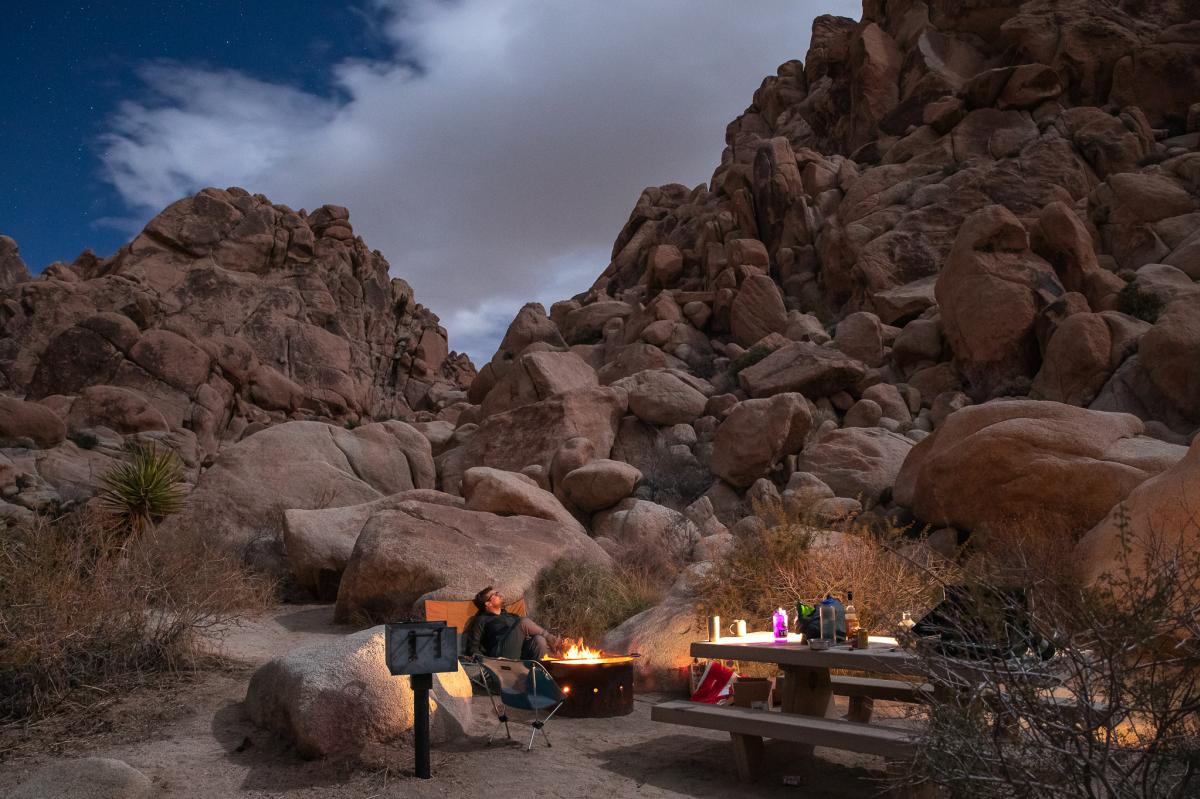
Jumbo Rocks and White Tank are the most popular campgrounds in Joshua Tree National Park, but snagging a spot can be a challenge during the high season. However, Indian Cove Campground offers the same scenery, and with 101 individual campsites and 13 group sites, it is a rare occasion that the campground is full. You may even be so far from your closest neighbors, you’ll forget you’re in a national park. This developed campground has pit toilets, fire rings and camp tables, but no hookups or drinking water.
Campsites start at $25 per night, and they can be reserved via recreation.gov or on a walkup basis. If you don’t have an annual America the Beautiful pass, entry to Joshua Tree National Park is an additional $30 per vehicle. The campground is open year-round, and just a one-hour drive from Greater Palm Springs.
Kelso Dunes (Mojave National Preserve)
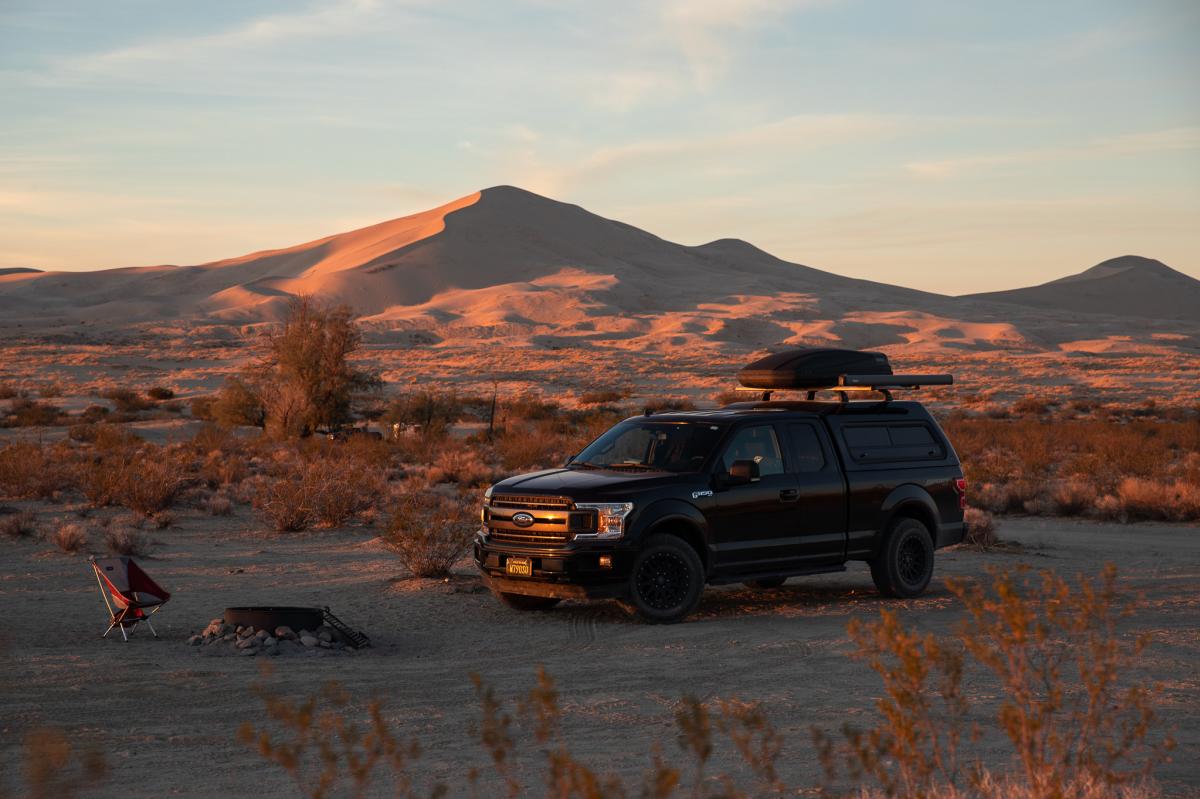
It’s technically an undeveloped campground, but most of the sites at the Kelso Dunes have metal fire pits, so it is fairly obvious where to set up camp. While the campsites are not currently numbered, boundary markers help motorists stay on designated routes and in established campsites. Pit toilets are available in the two main camping areas, each of which can accommodate about six different groups. The vegetation is sparse so there isn’t much privacy or shade, but all sites have views of the dunes. Visitors must pack out all trash, and construction of new fire rings is prohibited in the Mojave National Preserve.
Camping is free and available on a first-come, first-served basis. The campground is open year-round and it is a two-and-a-half-hour drive from Greater Palm Springs.
Ricardo Campground (Red Rock Canyon State Park)
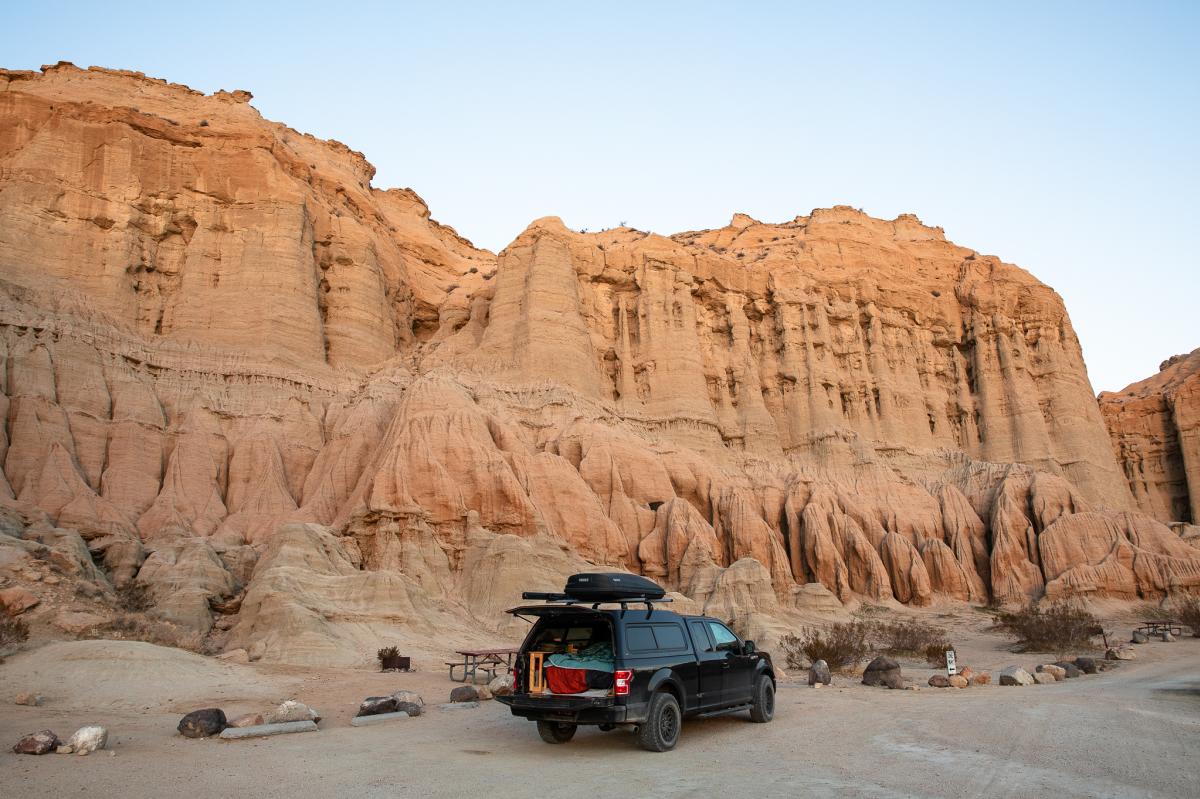
Red Rock Canyon State Park may only have a few trails and one developed campground, but the spectacular landscape makes this a must-see stop for desert enthusiasts. The Ricardo Campground has 50 sites, and during the week you might only see half a dozen of them occupied. Some of the campsites look over a field of Joshua Trees, and others are right next to a wall of jaw-dropping rock formations (pictured above). This campground has pit toilets, fire rings, camp tables and potable water, but no hookups.
Campsites are $25 per night, and they are only available on a first-come, first-served basis. The campground is open year-round, and it is a three-hour drive from Greater Palm Springs.
Owl Canyon Campground (Rainbow Basin Natural Area)
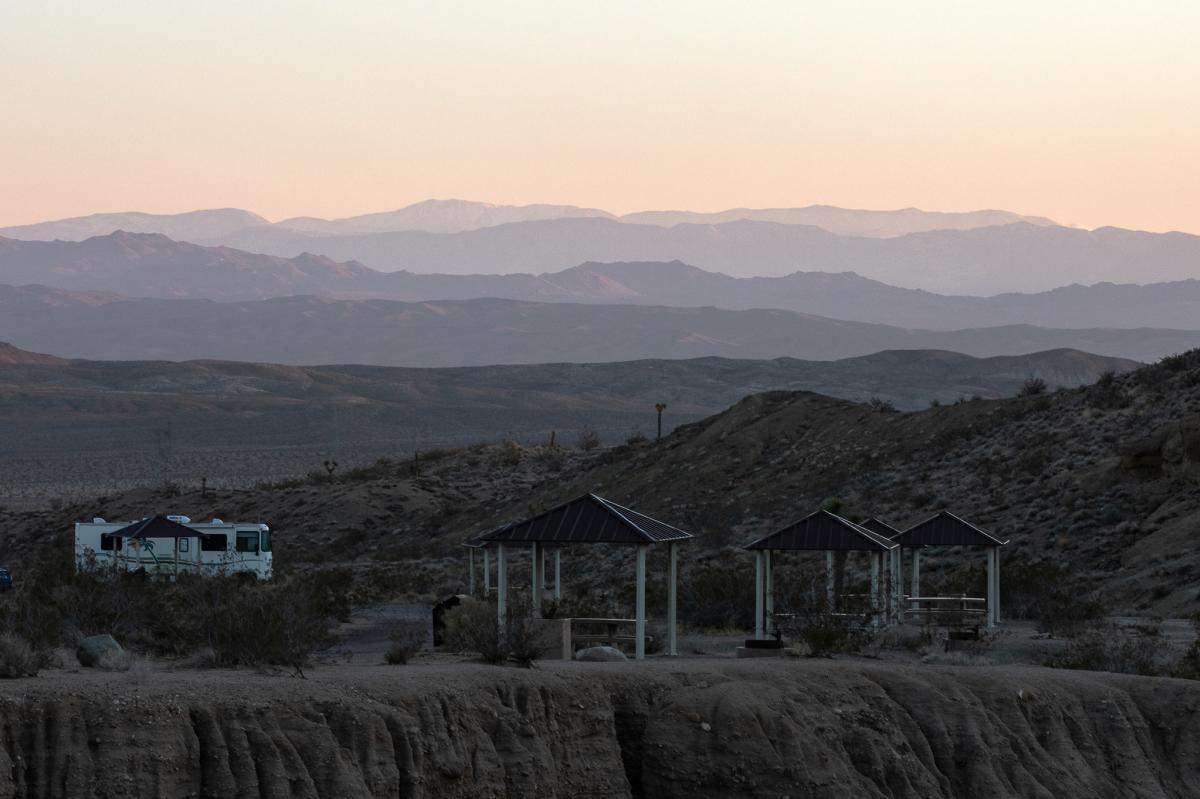
Owl Canyon Campground is set among clusters of vibrant rock formations in the Rainbow Basin Natural Area, which is 20 minutes from Barstow, California. When the sun drops, the mountain layers in the distance are just as stunning as the geological features around the campsites. This quiet, developed campground has 22 sites with fire rings, camp tables pit toilets and shade Ramadas, and while they are level and large enough for big rigs, hookups and water are not available.
Campsites are $6 per night and they are only available on a first-come, first-served basis. The campground is open year-round, and it is a two-and-a-half-hour drive from Greater Palm Springs.
Texas Springs Campground (Death Valley National Park)
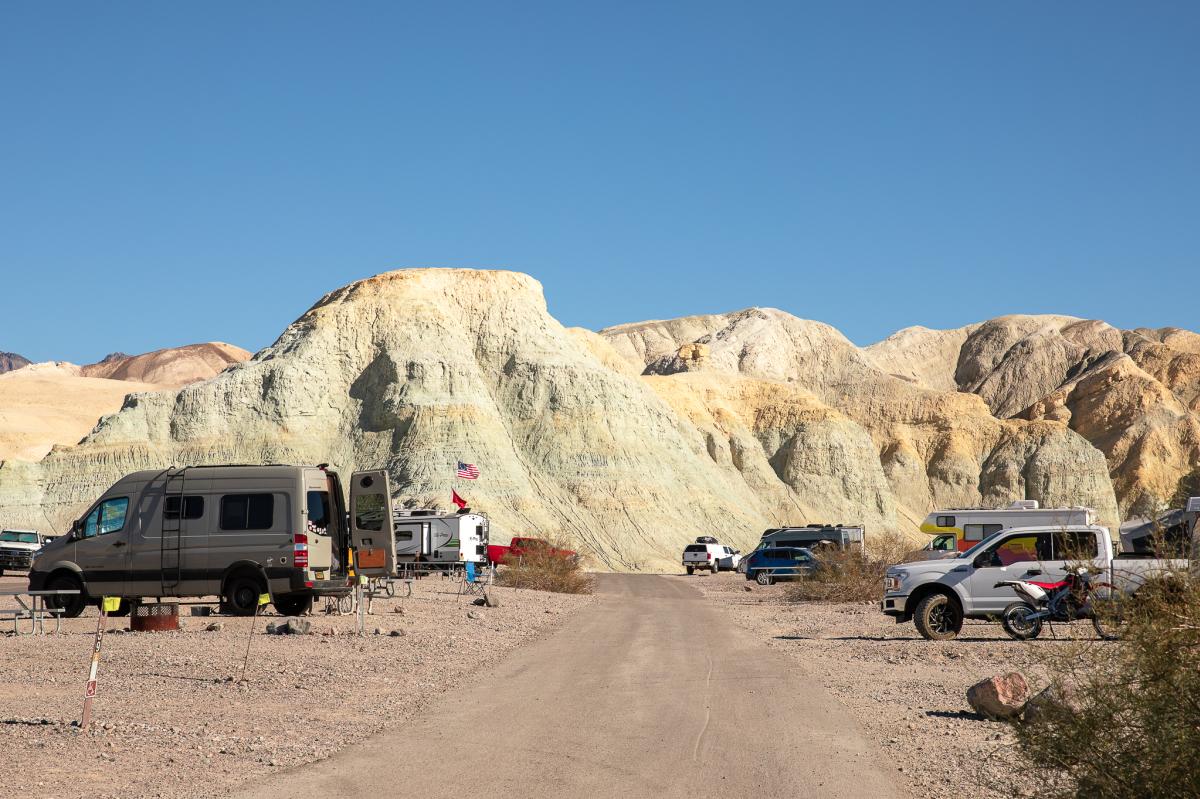
Some of the main campgrounds in Death Valley National Park are set in gravel parking lots, and while they’re very level, they don’t offer much in the way of views or privacy. However, of all the centrally-located campgrounds in the park with dozens of sites, Texas Springs Campground is considered the most scenic. This developed campground has 92 total sites; the lower loop tent sites look out over the valley, and the upper loop, which is for campers and trailers, is surrounded by colorful badlands. The campground has flush toilets, potable water and a dump station, and it even has a dishwashing area.
Campsites run $16 per night, and they are only available on a first-come, first-served basis. If you don’t have an annual America the Beautiful pass, entry to Death Valley National Park is an additional $30 per vehicle. This campground is open from mid-October to early May, and it is a five-hour drive from Greater Palm Springs.
Culp Valley Primitive Campground (Anza-Borrego Desert State Park)

Culp Valley Primitive Campground has over a dozen campsites with fire pits, and boundary markers help motorists stay on designated routes and in established sites. Like the Kelso Dunes, this is an undeveloped campground and the sites are not currently numbered, but they are very obvious. There is just one centrally-located pit toilet in the campground, and visitors must pack out all trash. Campfires are only permitted in the metal fire pits at the sites, as ground fires (i.e., a campfire in a handmade rock ring) are strictly prohibited in Anza-Borrego Desert State Park.
Campsites are free, and they are only available on a first-come, first-served basis. The campground is open year-round, and it is a two-hour drive from Greater Palm Springs.
Note: While a 4x4 vehicle is not necessary to access any of the campgrounds on this list, it is important to check the weather before your departure, as some of these spots are in flash flood zones, and dirt roads are often impassable when wet. Please also consider familiarizing yourself with Leave No Trace Principles before camping or exploring these areas to help minimize your impact on the land.














